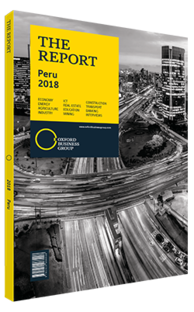Credit activity in Peru's construction sector begins to rebound
Following project delays caused by a high-profile corruption scandal at Brazil’s construction giant Odebrecht, which rippled across Latin America, the construction sector is at last refinding its financial footing. After nine consecutive months in negative territory, credit to the sector posted 0.56% year-on-year growth in March 2018, to PEN4.94bn ($1.5bn), according to the Peruvian Association of Banks (Asociación de Bancos del Perú, ASBANC). This renewed dynamism of credit activity was expected to continue into the second quarter, with the construction sector driving direct credit. “[This] will also help re-establish the suppliers’ payment chain and allow recovery in the granting of letters of guarantee, widely used to guarantee works and execution of future investment projects,” a report from the Economic Studies Department of Scotiabank noted.
Economic Heavyweight
The construction sector is one of the most important and dynamic in Peru due to its influence on crucial infrastructure such as housing, bridges, roads, schools and hospitals (see Construction & Real Estate chapter). However, its importance is not fully reflected in its share of the corporate loan portfolio, which itself accounts for roughly 65% of total lending in the country.
“Within loans to companies, which totalled PEN161.59bn ($49.8bn) as of March 2018, construction loans accounted for 3.06% of the total, [or] PEN4.94bn ($1.5bn),” ASBANC stated.
With a raft of delayed construction projects now expected to resume, as the dust from the Odebrecht scandal clears and broader credit growth continues apace, there could be further opportunities for the banking sector to finance construction activity, provided the appropriate measures can be put in place to restore lenders’ confidence in the industry.
Corruption Legacy
Despite a gradual return to normalcy, the legacy of the Odebrecht scandals remains. “The cases of corruption related to Odebrecht have greatly complicated the current situation of construction companies, a fact that has increased banks’ perception of risk towards the sector, which affects the dynamism of direct loans to these companies,” ASBANC told local media.
According to Guillermo Arbe, manager of economic studies at Scotiabank Perú, in trying to mitigate the side effects of the corruption scandal, some companies have been repaying banks and larger suppliers, but some are failing to repay smaller suppliers. “We are seeing this because loan growth in this business segment is lower than business loan growth in general, and non-performing loans are increasing in the segment where we find these smaller suppliers,” he told OBG.
However, he views the problem as largely been contained. In cases where banks are not providing guarantee letters, some companies are getting funding from abroad, or are getting guarantees from non-banking sources, such as insurance companies. “All in all, the market itself is working to find the solutions, enough to avoid more problems,” he stated.
While the delinquency ratio of construction companies rose by one percentage point to 5.9% in the year to December 2017, as per ASBANC figures, given the favourable outlook for the Peruvian economy (see Economy chapter), it expects this ratio to fall.
Regulatory steps should also go some way towards improving banks’ risk perceptions. According to the IMF, Law No. 30737, which was passed in March 2018 and provides for the immediate payment of civil reparations to the Peruvian state via a trust in the event of corruption or related crimes, should reduce uncertainty in the construction sector. To further improve fiscal governance, the fund called for more timely exchange of information and financial intelligence among anti-corruption agencies, as well as a stronger asset-declaration system, risk-based supervision and suspicious transaction reporting.
You have reached the limit of premium articles you can view for free.
Choose from the options below to purchase print or digital editions of our Reports. You can also purchase a website subscription giving you unlimited access to all of our Reports online for 12 months.
If you have already purchased this Report or have a website subscription, please login to continue.

